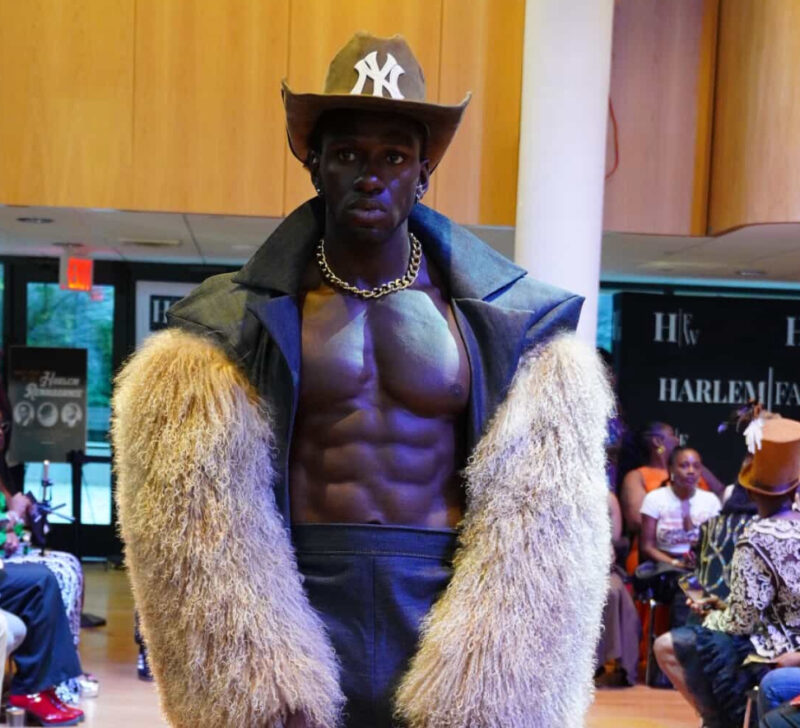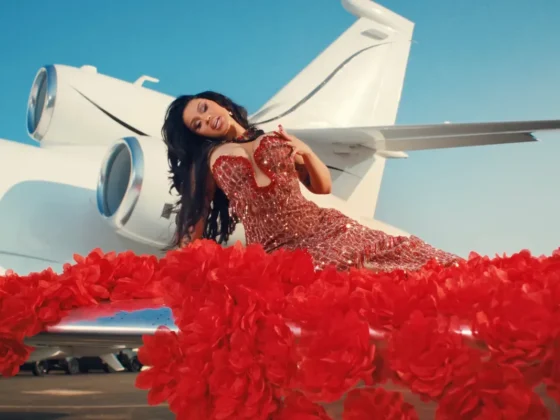Harlem Fashion Week has cemented itself as one of New York’s most exciting stages, and this season was no exception. For me, HFW is more than a fashion show—it’s a cultural checkpoint, a place where creativity, history, and innovation collide. Each season, designers, tastemakers, and cultural leaders come together in Harlem to witness what’s next. This year, all eyes were on one designer who not only captured the runway but the conversation long after: Khaleem Wise, winner of the Emerging Designer contest.
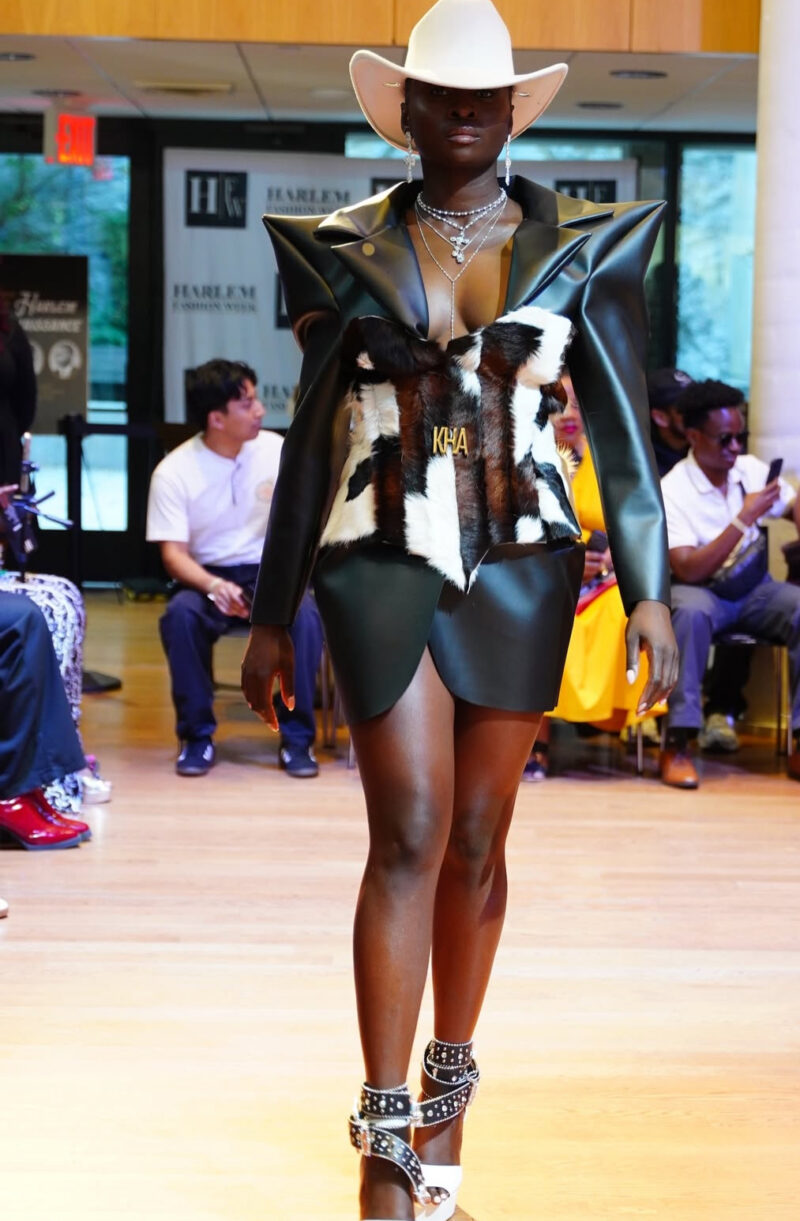 All images credited: Khaleem Wise
All images credited: Khaleem Wise
From the very first look, his collection demanded attention. This wasn’t just clothing—it was narrative. It was fabric transformed into storylines, silhouettes that carried weight, and textures that spoke volumes. Sitting in the audience, I felt that shift—that moment when fashion stops being about garments and becomes about culture.
Khaleem’s journey is as compelling as his designs. A Philadelphia native who has lived in New York for the past seven years, he splits his life between two demanding worlds: working as a flight attendant half the week and building his fashion brand the other half. That balance requires precision, discipline, and vision—all qualities that are evident in his work. He learned to sew from his mother, and though he has only been designing professionally for two years, the confidence in his collection felt like the work of someone far more seasoned.
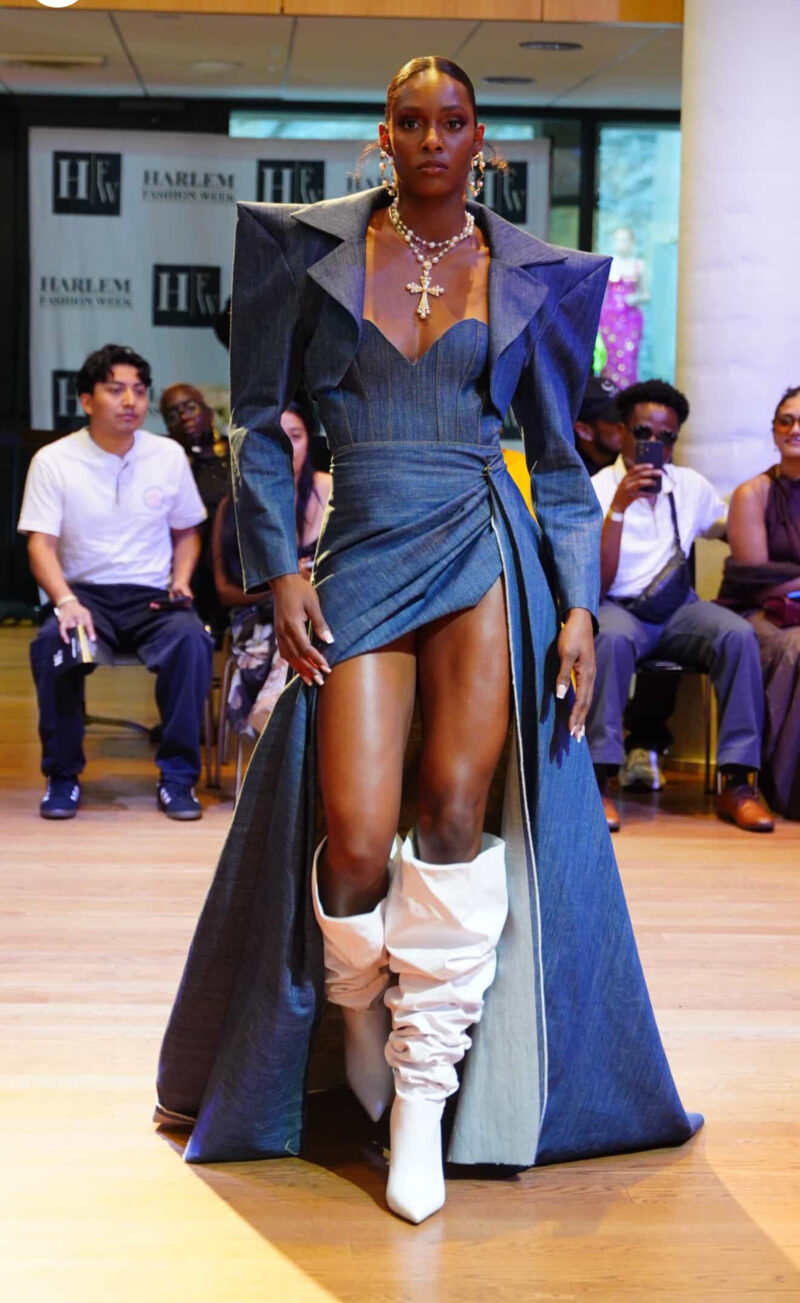
The inspiration for his Harlem Fashion Week debut came from Beyoncé’s Cowboy Carter Tour, a cultural reset that reframed Western and country aesthetics through a Black lens. Khaleem tapped into that moment and elevated it with his own perspective. Mongolian fur and leather anchored the collection, while bold cuts, and exaggerated textures, gave it that high-fashion edge. What could have been simply “Western-inspired” became something far more complex: a celebration of Black reinvention and a fearless approach to glamour.
Watching his looks glide across the runway, I couldn’t help but think about the weight of Harlem itself as the backdrop. This is a place that has always defined and exported culture, a neighborhood synonymous with Black excellence and artistry. To see Khaleem reinterpret a global pop culture moment through the lens of Harlem’s legacy felt timely, powerful, and intentional.
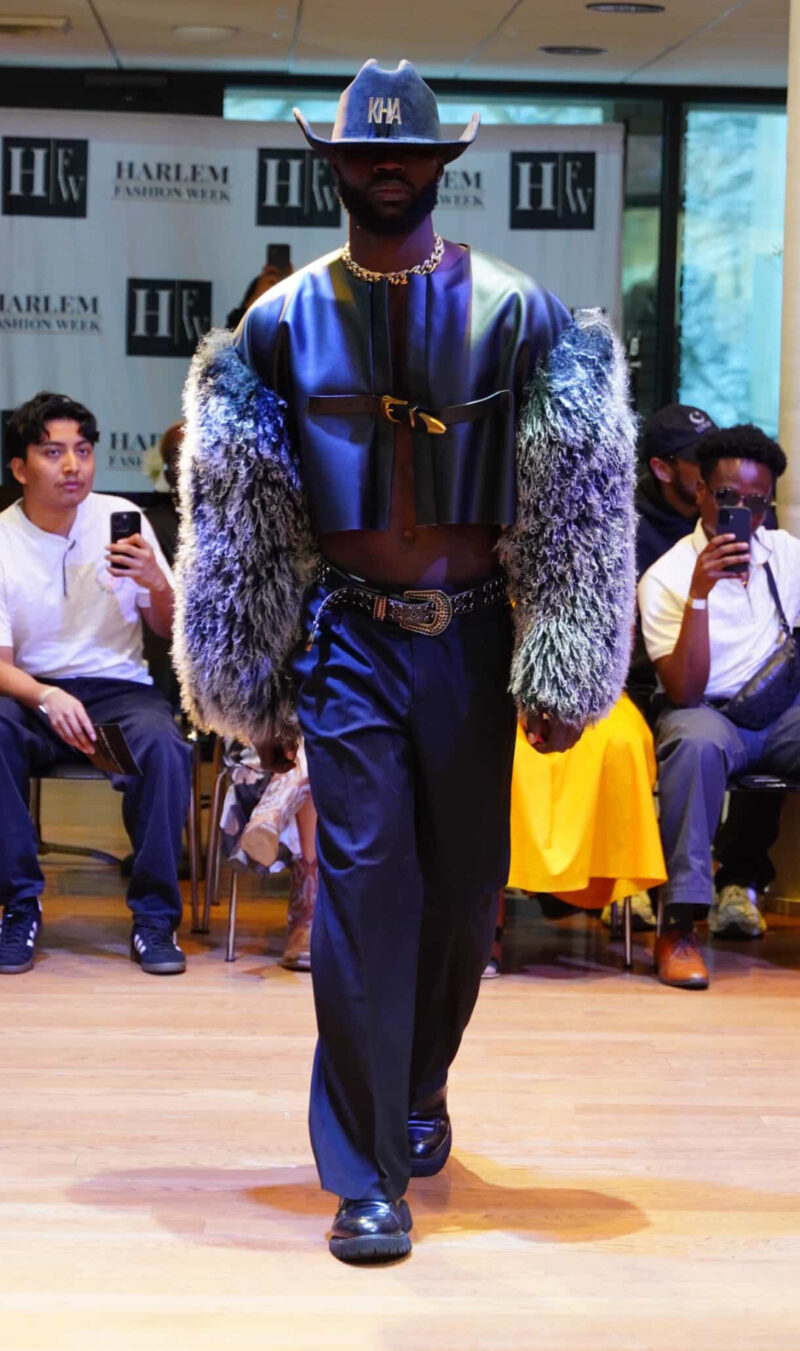
What makes Khaleem stand out further is his global perspective. Traveling the world as a flight attendant, he absorbs style cues, textures, and traditions from countless cultures. You can see those layers in his collections: an international sensibility woven into pieces that still speak directly to the communities that inspire him. It’s a balance of local storytelling with global perspective, which is exactly what makes his work feel fresh.
The fashion industry is already taking notice. Celebrity stylist J. Bolin has acknowledged his designs, and the crowd’s reaction during Harlem Fashion Week made it clear he was one of the evening’s standouts. The applause was immediate and enthusiastic, and his name lingered in conversations long after the last model left the runway.
Looking forward, Khaleem is preparing to broaden his reach. Traditionally, he has only shown during the September NYFW season, but he’s now planning a rock-inspired collection that aligns with the cultural anticipation of Beyoncé’s rumored rock album. This intentional syncing of fashion with music and art shows his understanding of how style moves with culture. His future goals—styling celebrities, collaborating with established brands, and showing more than once a year—aren’t just aspirations, they’re inevitable steps.
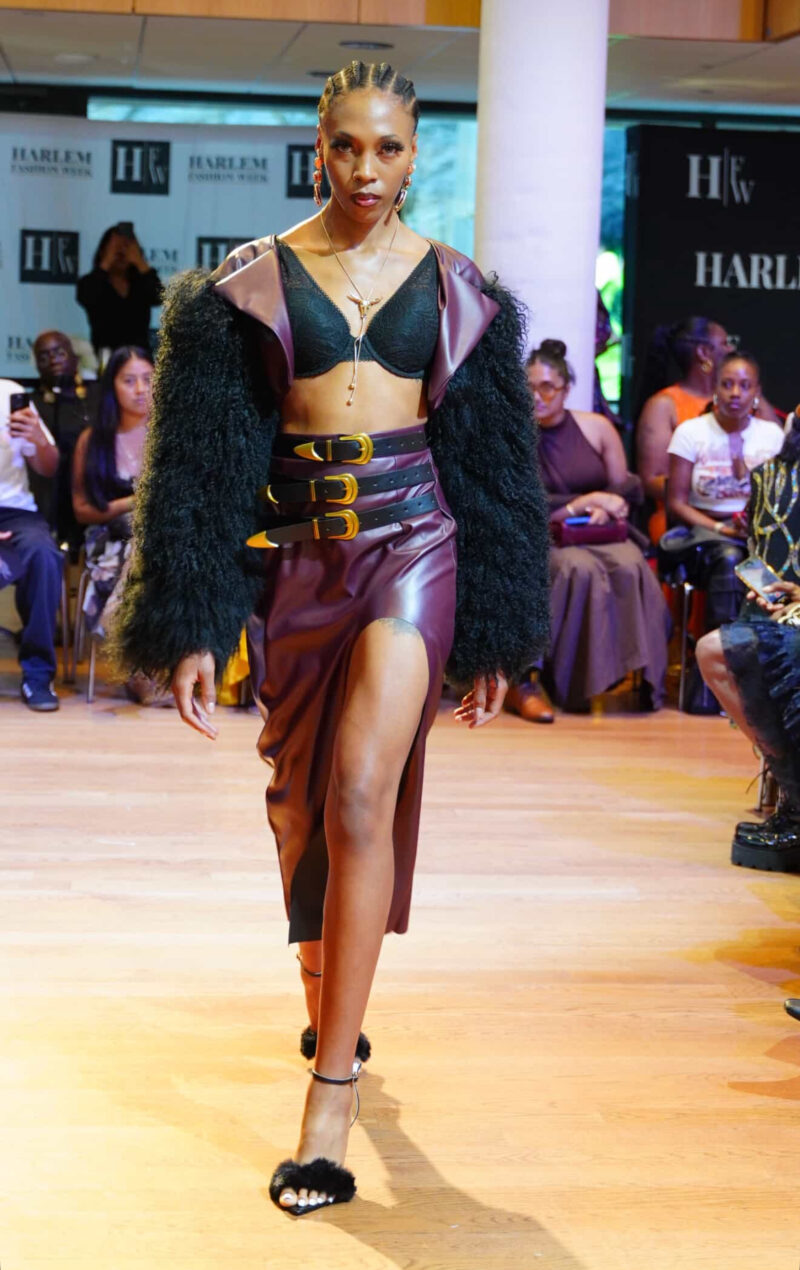
As someone who experiences these shows both as a stylist and a fashion observer, I left Harlem Fashion Week thinking about more than just what was seen on the runway. I thought about what it meant to witness a designer’s moment. Khaleem’s win was not just a trophy; it was a signal that his perspective matters in today’s fashion conversation. His ability to merge texture, global influence, and cultural commentary places him in a unique lane—one that I believe will only expand as his platform grows.
This is the heartbeat of Harlem Fashion Week: it is not just about presenting collections. It’s about nurturing new voices, highlighting diversity, and making space for fresh perspectives. Harlem continues to be a beacon of cultural leadership, and designers like Khaleem prove why this stage matters. His win is not just his alone—it’s a testament to the power of Harlem as a fashion capital and a reminder that the next defining voices in fashion are being born right here.

